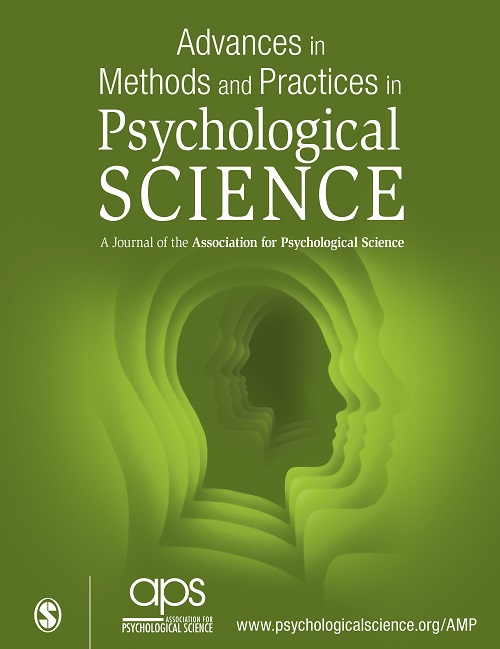模拟研究作为理解贝叶斯因子的工具
IF 13.4
1区 心理学
Q1 PSYCHOLOGY
Advances in Methods and Practices in Psychological Science
Pub Date : 2020-07-30
DOI:10.1177/2515245920972624
引用次数: 14
摘要
当社会科学家希望了解一种经验现象时,他们会进行一项实验。当他们想了解一个复杂的数值现象时,他们可以进行模拟研究。本教程的目标是双重的。首先,介绍了如何利用先前相对简单的模拟示例来建立模拟研究。其次,它演示了如何使用模拟来了解Jeffreys Zellner Siow(JZS)贝叶斯因子,这是BayesFactor R包和免费软件程序JASP中使用的贝叶斯因子的当前流行实现。存在许多关于贝叶斯因子的技术性论述,但对于不专门研究统计学的研究人员来说,这些论述可能有些遥不可及。本教程以循序渐进的方式展示了如何使用简单的模拟脚本来近似计算贝叶斯因子。我们解释了研究人员如何在几行代码中编写这样一个采样器来近似贝叶斯因子,用于可视化贝叶斯因子的Savage Dickey方法背后的逻辑是什么,以及用于计算贝叶斯因子的先验分布的不同选择的实际差异是什么。本文章由计算机程序翻译,如有差异,请以英文原文为准。
Simulation Studies as a Tool to Understand Bayes Factors
When social scientists wish to learn about an empirical phenomenon, they perform an experiment. When they wish to learn about a complex numerical phenomenon, they can perform a simulation study. The goal of this Tutorial is twofold. First, it introduces how to set up a simulation study using the relatively simple example of simulating from the prior. Second, it demonstrates how simulation can be used to learn about the Jeffreys-Zellner-Siow (JZS) Bayes factor, a currently popular implementation of the Bayes factor employed in the BayesFactor R package and freeware program JASP. Many technical expositions on Bayes factors exist, but these may be somewhat inaccessible to researchers who are not specialized in statistics. In a step-by-step approach, this Tutorial shows how a simple simulation script can be used to approximate the calculation of the Bayes factor. We explain how a researcher can write such a sampler to approximate Bayes factors in a few lines of code, what the logic is behind the Savage-Dickey method used to visualize Bayes factors, and what the practical differences are for different choices of the prior distribution used to calculate Bayes factors.
求助全文
通过发布文献求助,成功后即可免费获取论文全文。
去求助
来源期刊
CiteScore
21.20
自引率
0.70%
发文量
16
期刊介绍:
In 2021, Advances in Methods and Practices in Psychological Science will undergo a transition to become an open access journal. This journal focuses on publishing innovative developments in research methods, practices, and conduct within the field of psychological science. It embraces a wide range of areas and topics and encourages the integration of methodological and analytical questions.
The aim of AMPPS is to bring the latest methodological advances to researchers from various disciplines, even those who are not methodological experts. Therefore, the journal seeks submissions that are accessible to readers with different research interests and that represent the diverse research trends within the field of psychological science.
The types of content that AMPPS welcomes include articles that communicate advancements in methods, practices, and metascience, as well as empirical scientific best practices. Additionally, tutorials, commentaries, and simulation studies on new techniques and research tools are encouraged. The journal also aims to publish papers that bring advances from specialized subfields to a broader audience. Lastly, AMPPS accepts Registered Replication Reports, which focus on replicating important findings from previously published studies.
Overall, the transition of Advances in Methods and Practices in Psychological Science to an open access journal aims to increase accessibility and promote the dissemination of new developments in research methods and practices within the field of psychological science.

 求助内容:
求助内容: 应助结果提醒方式:
应助结果提醒方式:


